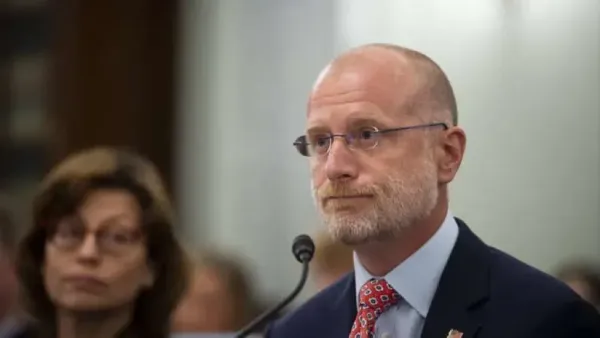Proprietary Data Cited as Challenge for Broadband Mapping
WASHINGTON, September 26 – State and federal government programs to develop maps of broadband service availability at a granular level must overcome objections by carriers to revealing what they view as proprietary information, although carriers may actually find the resulting maps beneficial, panel
Editor’s Note: The following story was published in TR Daily on September 26, 2008, and is reprinted with the permission of Telecommunications Reports International, Inc. This article is and remains Copyright 2008 Telecommunications Reports International, Inc.
By Lynn Stanton, TR Daily
State and federal government programs to develop maps of broadband service availability at a granular level must overcome objections by carriers to revealing what they view as proprietary information, although carriers may actually find the resulting maps beneficial, panelists at the Broadband Census for America Conference said today.
Speaking at the conference held at the Washington office of the American Association for the Advancement of Science, Art Brodsky, director-communications at Public Knowledge, criticized the carriers’ objections to broadband mapping projects by questioning the proprietary and competitive value of information on where carriers have already deployed broadband services. He noted that carriers are not being asked about future deployment plans, which would more clearly involve competitive concerns.
Drew Clark, executive director of BroadbandCensus.com, which was one of the sponsors of the conference, noted that the FCC and carriers have objected to attempts to obtain underlying carrier data on broadband deployment submitted to the FCC, arguing that disclosure causes competitive harm by permitting new entrants to better target those areas lacking broadband competition. Because the data submitted to the FCC has not been made publicly available, BroadbandCensus.com and others, including the Communication Workers of America’s Speed Matters program, have resorted to obtaining information directly from consumers, a process Mr. Clark termed “crowd-sourcing.” By submitting information on their own service at a particular location, and taking download and upload speed tests, individual users can participate in the development of broadband maps or databases.
Mr. Clark said the three purposes of BroadbandCensus.com are to aid the process of competition, serve policy-makers, and aid consumers.
Mark McElroy, chief operating officer of Connected Nation, said that a mapping program will be beneficial if it’s relevant to consumers, in that the map can tell them if they can get broadband at home; if it’s relevant to providers, in that it can let them know where and why they should extend their networks; and if it’s relevant to increased digital literacy, in that it can be used in conjunction with an effective demand stimulation effort.
Debbie Goldman, coordinator of the CWA’s Speed Matters, said that in developing broadband mapping and deployment policies, “the states are the laboratories because unfortunately we don’t have a national policy.”
Kenneth Flamm, a professor of public affairs the University of Texas-Austin, said that collecting information on broadband use “is a job actually for the federal government and the federal statistical agencies,” but that they lack adequate funding and don’t do a good job of keeping up with relatively new services. “There shouldn’t be an argument about whether the government going out to try to measure the state of the market is somehow infringing [on private companies] . . . There’s no private-public conflict here,” he added.
A member of the audience suggested the Internal Revenue Service and private online tax-filing companies could capture information on broadband connection rates with an “opt-in” speed-test at the time of filing. Mr. Flamm said that was a “clever idea.”
Speaking during the closing keynote, Eamonn Confrey, first secretary-information and communications policy at the Irish Embassy in Washington, explained his country’s broadband initiatives, which include its broadband.gov.ie website. The overall purpose of the site is to help consumers and small business, he said. While customers cannot order broadband service on the site, it does include links to broadband providers in their area. It also has a tool to check if digital subscriber line (DSL) service – the principal nonmobile broadband technology in Ireland – is available at the user’s fixed-line phone number.
The website also allows consumers “to register their demand for broadband,” so providers can see where there is demand.
“Initially, there was a lot of resistance from larger providers” to listing their services on the website, which is a voluntary process for providers, Mr. Confrey said. Eventually, however, they came to see it as a competitive disadvantage not to be listed there. The website “has proved to be a win-win for provider and consumer alike,” he added.
The government also recently launched a national broadband scheme to reach the remaining 10% of the population that does not have broadband service available, Mr. Confrey said. The government provides funding to induce broadband in those areas while setting requirements to ensure that “the winning company won’t be able to cherry-pick” within the contracted area.
Mr. Confrey emphasized that the Irish government views broadband deployment as “an economic competitiveness issue for us,” as the country seeks to retain employers like Yahoo, Inc., and Google, Inc., that are attracted by an English-speaking, “fairly well educated” workforce in Europe. “You simply won’t retain that kind of investment without the infrastructure,” he added.
– Lynn Stanton, lynn.stanton@wolterskluwer.com
TR Daily, September 26, 2008
Copyright © 2008, Telecommunications Reports International, Inc.










Member discussion